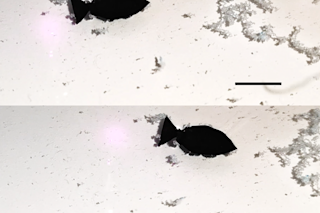The first teaser trailer for the upcoming film "Star Wars Episode VII: The Force Awakens" treated viewers to the familiar sights and sounds of many science fiction ideas that moviegoers loved from the original trilogy: a hover vehicle skimming above the ground, a whimsical droid's beeps and bloops, a shot of X-Wings flying in formation, and the hiss of a lightsaber being revealed. Such technologies have inspired young girls and boys to become scientists and engineers, and have even helped spawn several U.S. military projects.
Yet the Star Wars films manage to dazzle us with their technological fantasies without having meaningful things to say about how technology actually works. Most Star Wars technology seems to exist in its own alternate dimension that defies both physics and common-sense use of technology. X-Wings perform maneuvers in space as though they were aircraft constrained by flying in Earth's atmosphere. Imperial TIE Fighters have ...














